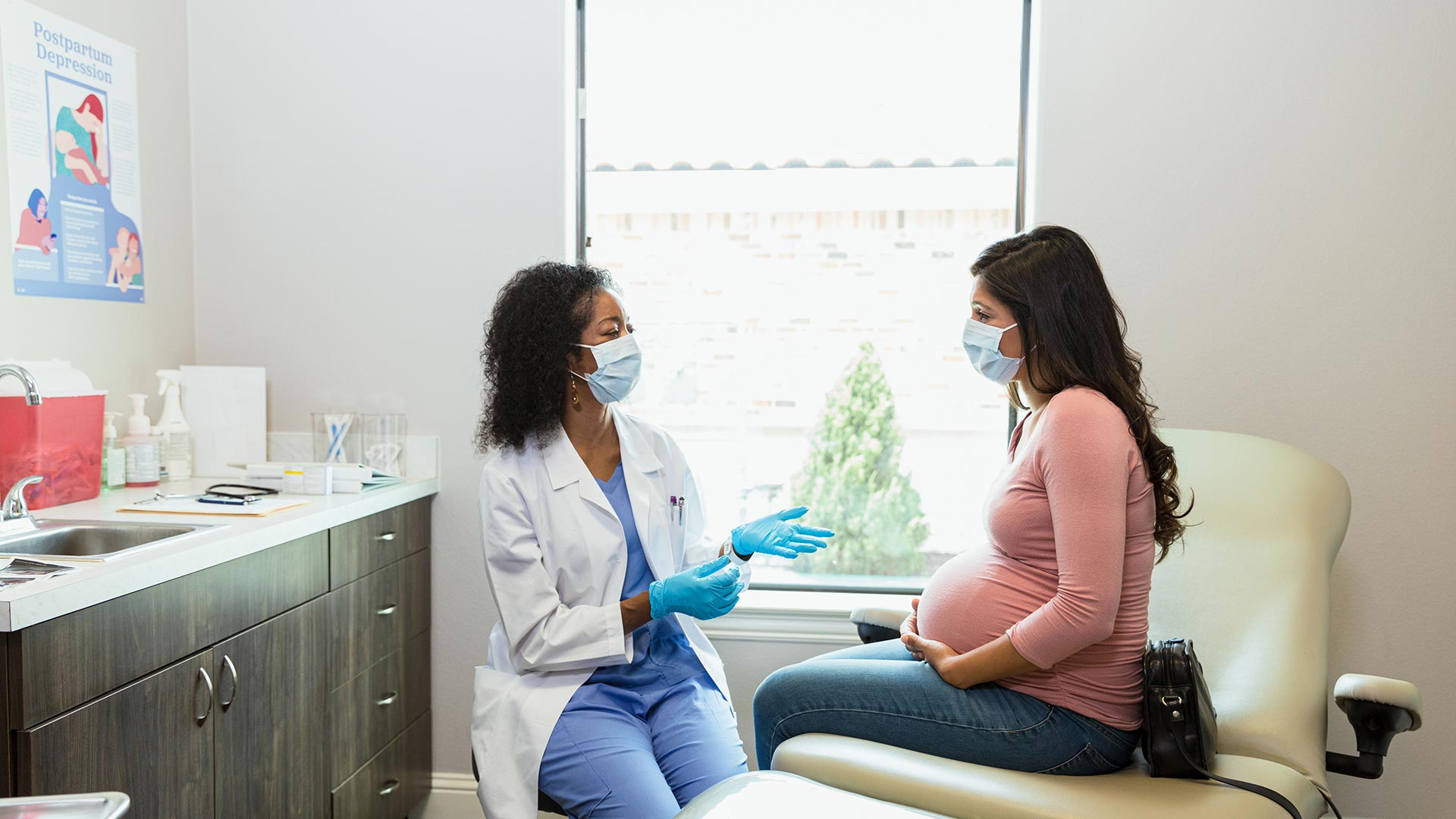
Maternal Mortality Definition
Before we can understand the drivers of maternal mortality, it’s important to understand what the term means.
According to the World Health Organization (WHO), the definition of maternal mortality is a death that occurs during pregnancy, childbirth, or within 42 days after delivery or termination.
The Centers for Disease Control and Prevention (CDC) measure pregnancy-related deaths in the U.S. for up to 1-year post delivery and have found:
occur during pregnancy
occur at the time of delivery
occur up to 42 days after delivery
occur after 43 days and up to one year
Taking into account that a majority of maternal deaths occur postpartum, it’s important that longer-term follow-up care is provided and women receive education about the symptoms that can occur after the 6-week check-up.
Maternal Mortality On The Rise, Disparities Exist Among Black Women
Among developed countries, the U.S. has the highest maternal mortality rate, and rates have been trending upward over the last two decades.
In fact, according to a recent report from the CDC, rates increased from 20.1 to 23.8 per 100,000 live births.
Additionally, maternal mortality rate was highest among black women, representing 55.3 deaths for every 100,000 live births in 2020, up from 44 in 2019, and nearly three times that of white and Hispanic women, the same report found.

What Are The Causes of Maternal Mortality?
Some cases of maternal mortality are not preventable such as those caused by an amniotic fluid embolism, a rare but serious condition.
Yet most maternal deaths due to conditions such as obstetric hemorrhage, hypertension, infection, and thromboembolism are preventable.
While maternal weight and obesity are not considered causes of maternal mortality, weight can make it more likely that a woman will present with hypertension and thromboembolism.
- Cardiovascular disease
Black women are three times as likely to die from venous thromboembolism, hypertensive disorders, and cardiomyopathy compared to other racial-ethnic groups which may be due to lack of access, racial disparities, and biases within the healthcare community.
Cardiovascular disease is responsible for > 33% of pregnancy-related deaths and one review found up to 68% are potentially preventable.
Cardiomyopathy, in particular, is a leading cause of “late” maternal deaths that occur between 43 and 365 days postpartum.
Venous thromboembolism is also a leading cause of maternal mortality and accounts for 9.3% of maternal deaths.
- Pre-eclampsia
Cases of pre-eclampsia, a condition that’s marked by hypertension, have increased 25% between 1987 and 2004, but rates are still 60% higher for black women than white women. They are also more likely to experience poorer health outcomes and death.
- Maternal age and fertility
Maternal age is also a risk factor for maternal death.
In fact, the maternal mortality rate for women over the age of 40 is 6 times higher than for women under 25. Some of this may be attributable to mothers who have cardiometabolic risk factors and chronic conditions such as diabetes, obesity, and hypertension.

Reduce Maternal Mortality: Increase Access, Quality Care, and Postpartum Support
There’s no single solution to address rising rates of maternal mortality, but it does require a commitment among all stakeholders.
Women need better access to quality care and basic screenings for risk factors and chronic diseases.
In the U.K., most women deliver their babies with midwives. Midwives can provide prenatal care, assist with childbirth, provide support during the postpartum period, and address the social and environmental factors that negatively impact health outcomes.
Yet in the U.S., childbirth is still viewed—and treated as—a disease and a medical event rather than the normal, natural phenomenon it is. Despite everything we know about the complications of c-sections, rates still linger at more than 31%.
The U.S. also has the lowest amount of midwives—likely because most health plans won’t cover the cost, but they could prevent 41% of maternal deaths, a 2021 study in The Lancet Global Health suggests.
That’s the case in California where maternal mortality rates are the lowest in the country, Kaiser Permanente has a large presence, and prenatal care provided by midwives has increased in recent years.
Home visits within 6 weeks of delivery also have value, and allow providers to address the social determinants of health (SDoH) that women may not be able to articulate or that are not easily identified by an in-office visit such as poor housing and unsafe environments.
“As the U.S. continues to stare down The Great Resignation, it’s imperative for employers to offer roles with more generous paid time off, and increased flexibility for pregnant women and mothers to work remotely, especially during the second and third trimesters.”
How Employers Can Solve for Maternal Mortality
Healthcare is costly in the U.S., but prenatal and maternity care, in particular, can cause significant financial setbacks.
In fact, according to a recent study in the journal Obstetrics and Gynecology, when health insurance premiums were accounted for, 21.3% of birth parents had “catastrophic” health expenditures, and those with low incomes had the highest risk.
For employers, therefore, improving health outcomes and driving access to quality, affordable care is vital.

- Prenatal and maternity education
A good first step is to provide education and awareness about prenatal, maternal, and postpartum care, chronic disease prevention and management, and signs of complications women should look for.
Some health plans, for example, have a pregnancy program for their members that connect women with a health coach and provides tools and resources.
We have also seen improved outcomes where there is a public-private partnership, as exemplified by the California Maternal Quality Care Collaborative (CMQCC), which is leading the country in the reduction of maternal mortality at the state-level.
- Flexible work options
As the U.S. continues to stare down The Great Resignation, it’s imperative for employers to offer roles with more generous paid time off, and increased flexibility for pregnant women and mothers to work remotely, especially during the second and third trimesters.
Between March and April 2020, more than 3.5 million mothers of school-age children left the workforce, lower than what was seen in 1988.
While we have experienced somewhat of a return to normal and return to the office, 35% of mothers won’t continue working as they did pre-pandemic and 22% plan to reduce their work hours, according to a 2021 study by The Hamilton Project.
- Improve health benefits design
Health plans need to re-think their benefits design to improve health outcomes and reduce maternal mortality rates.
Women should be encouraged to check in with their providers a few times within 6 weeks of delivery, even if it is via telehealth, or have the option for home visits which provide a ton of value for women and can address the SDoH.
Providers should also look for additional touch-points to assess a woman’s health, such as when the postpartum depression screening is conducted.
Consider wellness and healthcare navigation solutions
Employers looking to improve maternal health outcomes and lower costs may consider partnering with point solution partners such as Ovia Health, Progyny, Maven, and Cleo.
Additionally, at Alight, we provide hyper-personalization campaigns that help women navigate to high-quality, affordable care and support throughout their pregnancies. In fact, 14% of our provider searches are for OBGYN providers, so we’re certain the need is there.
As employers look to ways to improve health outcomes and drive engagement, I encourage them to bring awareness to maternal health and expect the same from their provider and payor relationships.


